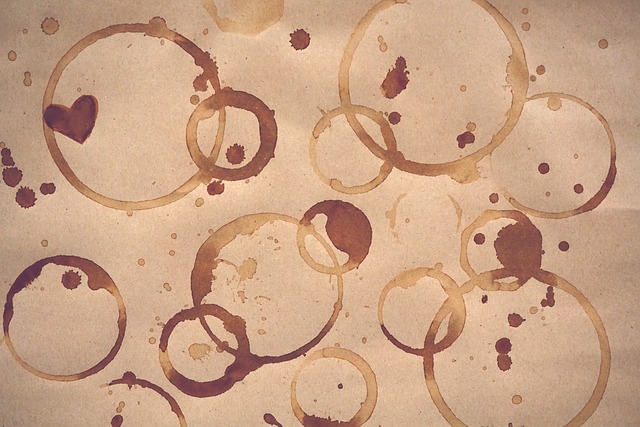The text emphasizes the importance of addressing grout line stains, highlighting their porous nature that allows oil, dirt, and chemicals to penetrate. It provides a comprehensive guide to stain removal, from understanding composition to cleaning techniques. Key points include:
– Neglected grout lines accumulate various stains over time.
– Proper preparation involves sweeping, scrubbing, and damp wiping to loosen debris and moisture.
– Natural solutions like baking soda, vinegar, lemon juice, and tea tree oil are effective for light stains.
– Persistent stains require specialized cleaners with bleaching or acid-based properties.
– DIY methods are cost-effective for minor staining but severe cases may need professional equipment.
– Regular cleaning, weekly mopping, and annual sealing prevent future grout stains.
– Safe removal involves using non-toxic cleaners, soft tools, proper ventilation, and avoiding harsh chemicals.
Grout lines, those intricate patterns that define your bathroom or kitchen tiles, can fall victim to stubborn stains over time. Understanding grout and why stains occur is the first step in achieving crystal-clear lines again. This comprehensive guide delves into various stain types, preparation techniques, and cleaning methods—natural and chemical—for effective grout stain removal. Learn about DIY versus professional services, maintenance tips, common mistakes to avoid, and inspiring case studies, empowering you to remove stains from grout lines once and for all.
Understanding Grout and Why Stains Occur

Grout, a material typically composed of sand, cement, and water, is an essential component in tiling and flooring installations, filling the spaces between tiles to create even surfaces. However, despite its functional purpose, grout can become a haven for stains due to various factors. Oil, grease, dirt, and various chemicals can easily penetrate the porous grout lines, leading to unsightly marks that are both difficult to clean and prevent from reappearing.
Stains on grout lines often occur due to poor maintenance or inadequate cleaning methods. Food spills, pet accidents, or even everyday wear and tear can contribute to staining. Once stains set in, they can be challenging to remove, especially for homeowners without professional cleaning tools. Therefore, understanding the nature of grout and why stains form is crucial for effective stain removal and maintaining a clean, aesthetically pleasing floor or wall surface.
Identifying Different Types of Grout Stains

Grout lines, often overlooked, can become a source of unsightly stains over time. Identifying the type of stain is crucial in determining the best course of action for deep stain removal from grout. Common types include water damage, mold and mildew, ink, oil-based stains, and general dirt and grime accumulation. Water damage stains are usually dark or discolored patches caused by leaks or high humidity. Mold and mildew thrive in damp environments, leaving behind black or green blotches. Ink stains can range from faint to deep, while oil-based substances like soap, grease, or pen marks may leave a yellowing or browning effect. Understanding the specific stain will guide you in choosing the right tools and methods for effective grout stain removal.
When it comes to removing stains from grout lines, having the right products is key. Many common household cleaners aren’t potent enough to tackle deep-seated dirt and discoloration. Opt for powerful yet safe grout cleaning solutions designed to dissolve tough stains without damaging the grout or tile surface. These specialized products often contain enzymes or acidic components that break down organic matter, such as mold and mildew, or alkaline agents effective against water spots and mineral deposits. Always follow product instructions carefully and test on a small, inconspicuous area first to ensure optimal results without adverse effects.
Preparation: Cleaning the Area Before Treatment

Before diving into any deep stain removal process, it’s crucial to prepare the area thoroughly for optimal results. Start by sweeping or vacuuming the floor to eliminate loose debris and dust that might interfere with the cleaning process. Then, use a soft-bristled brush or an old toothbrush to gently scrub away any visible grime or dirt on the grout lines themselves. This initial step is essential as it ensures that your stain remover will make direct contact with the stains, enhancing its effectiveness.
Additionally, wiping down the area with a damp cloth can help loosen and remove any existing moisture or substances that might be trapping the stains. This preparation phase is all about ensuring a clean canvas for your stain removal efforts, making the process more efficient and potentially preventing further discolouration or damage to the grout over time.
Natural Cleaning Solutions for Grout Stain Removal

When it comes to deep stain removal from grout lines, there are numerous natural cleaning solutions that can be just as effective as commercial products. Baking soda and vinegar are classic examples; their powerful yet gentle combination can cut through grease, grime, and even mold spores. To use this method, mix equal parts baking soda and white vinegar to create a paste, apply it directly onto the stained grout, and let it sit for 15-20 minutes before scrubbing gently with a soft-bristled brush.
Another eco-friendly option is using lemon juice or essential oils like tea tree oil. Lemon juice acts as a natural bleach, while tea tree oil has antimicrobial properties that can help eliminate bacteria and fungi causing stains. For a deep clean, apply pure lemon juice to the grout and let it soak for an hour before wiping away with a damp cloth. Alternatively, mix a few drops of tea tree oil with water in a spray bottle, spritz onto the stained areas, and let it work its magic for several hours or overnight for best results when removing tough stains from grout lines.
Chemical Approaches to Remove Persistent Stains

Removing persistent stains from grout lines can be a challenging task, but there are chemical approaches that can help. One effective method involves using specialized grout cleaners that contain powerful bleaching agents or acid-based solutions. These chemicals penetrate deep into the grout, breaking down and lifting away stubborn stains. They are particularly useful for tackling organic stains like mold, mildew, and blood, as well as mineral deposits left by hard water.
When employing these chemical solutions, it’s important to follow safety precautions and wear protective gear, such as gloves and eye protection. Additionally, testing the cleaner on a small, inconspicuous area first is recommended to ensure it doesn’t cause discoloration or damage to the grout or surrounding tiles. After applying the cleaner, allow it sufficient time to work before scrubbing thoroughly with a stiff-bristled brush. Rinse well and dry completely for best results in removing stains from grout lines.
DIY vs Professional Grout Cleaning Services

When it comes to removing deep stains from grout lines, there are two primary options: doing it yourself (DIY) or hiring professional grout cleaning services. DIY methods can be effective for light-to-moderate staining and often involve using home remedies like baking soda, vinegar, or commercial grout cleaners. These solutions are cost-effective and allow you to maintain control over the process. However, severe or embedded stains may require more robust techniques that professionals can offer.
Professional grout cleaning services boast specialized equipment and expertise tailored for deep stain removal. They use high-pressure washing, steam cleaning, or advanced chemical treatments to loosen and eliminate stubborn stains. While this approach might be pricier than DIY methods, it guarantees deeper cleaning, faster results, and longer-lasting grout that looks as good as new. Choosing between DIY and professional services depends on the severity of the stain, your budget, and the desired outcome for your grout lines.
Preventing Future Stains and Maintaining Your Grout

Regular cleaning and maintenance are key to preventing future grout stains. After removing deep stains, it’s crucial to develop a consistent cleaning routine. Start by sweeping or vacuuming your floors daily to eliminate loose dirt and debris that can re-enter the grout lines. Then, use a mild detergent and warm water to mop the floors weekly. This simple step goes a long way in keeping grout lines clean and preventing new stains from forming.
Additionally, sealing your grout annually with a high-quality sealer can provide an extra layer of protection against moisture, dirt, and other stain-causing agents. This process fills in the pores of the grout, making it easier to wipe away any residual spills or messes quickly before they set and become permanent stains. Remember, proactive care will ensure your grout stays looking fresh and clean for years to come, making the effort to maintain it well worth your while.
Common Mistakes to Avoid During the Cleaning Process

When tackling deep stain removal from grout lines, it’s essential to understand what not to do to avoid making matters worse. One common mistake is using harsh chemicals without proper protection. Many standard household cleaners can damage tile and grout over time, leaving your grout lines looking even worse. Always wear gloves and consider natural, non-toxic alternatives for safer cleaning.
Another blunder is aggressive scrubbing, which can erode the grout material and damage the surrounding tiles. Instead of a hard brush, opt for a soft-bristled tool or even a toothbrush for spot treatment. Excessive water exposure is another pitfall; overwatering can lead to mold and mildew growth within the grout lines. Ensure proper ventilation during cleaning and allow the grout to dry thoroughly between applications.
Case Studies: Successful Grout Stain Removal Stories

In the world of home maintenance, few tasks are as daunting yet satisfying as successfully removing deep grout stains. Consider the stories of homeowners who once dreaded their stained grout lines, only to find solutions that left their spaces looking brand new. One such case involves a kitchen floor with ingrained oil spots from years of spills and splashes. Through a combination of natural cleaning agents and specialized tools, the stains were not just lightened but completely removed, restoring the floor’s original beauty.
Another inspiring tale comes from a bathroom where water damage had left dark, stubborn stains on the grout. Using an enzymatic cleaner and a scrub tool designed for grout, the homeowner achieved remarkable results. The process was efficient, cost-effective, and eco-friendly, proving that even the most challenging grout stain removal tasks can be accomplished successfully with the right approach. These real-life examples demonstrate that removing stains from grout lines is not only achievable but also transformative, turning problematic areas into highlights of a home’s aesthetic appeal.
